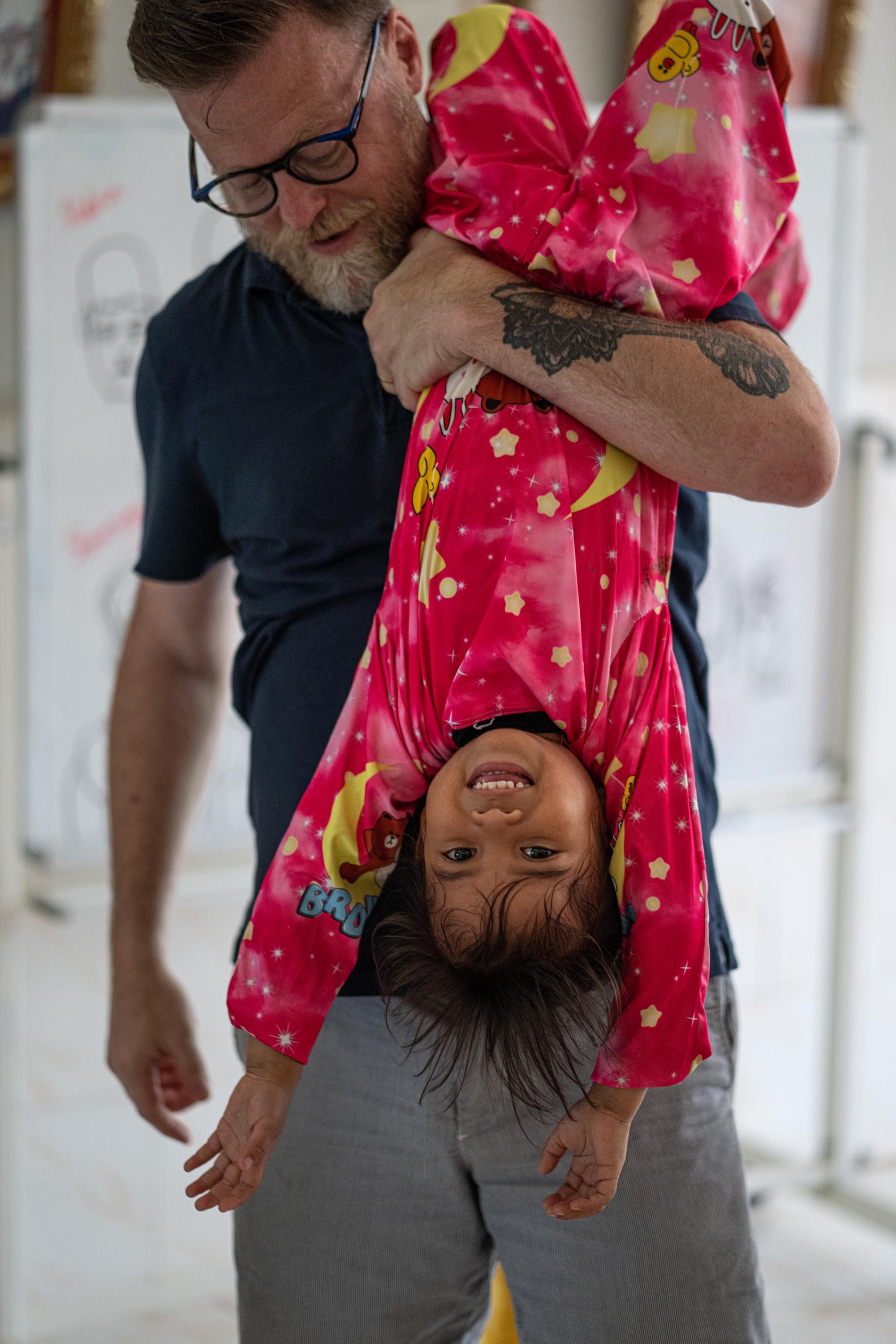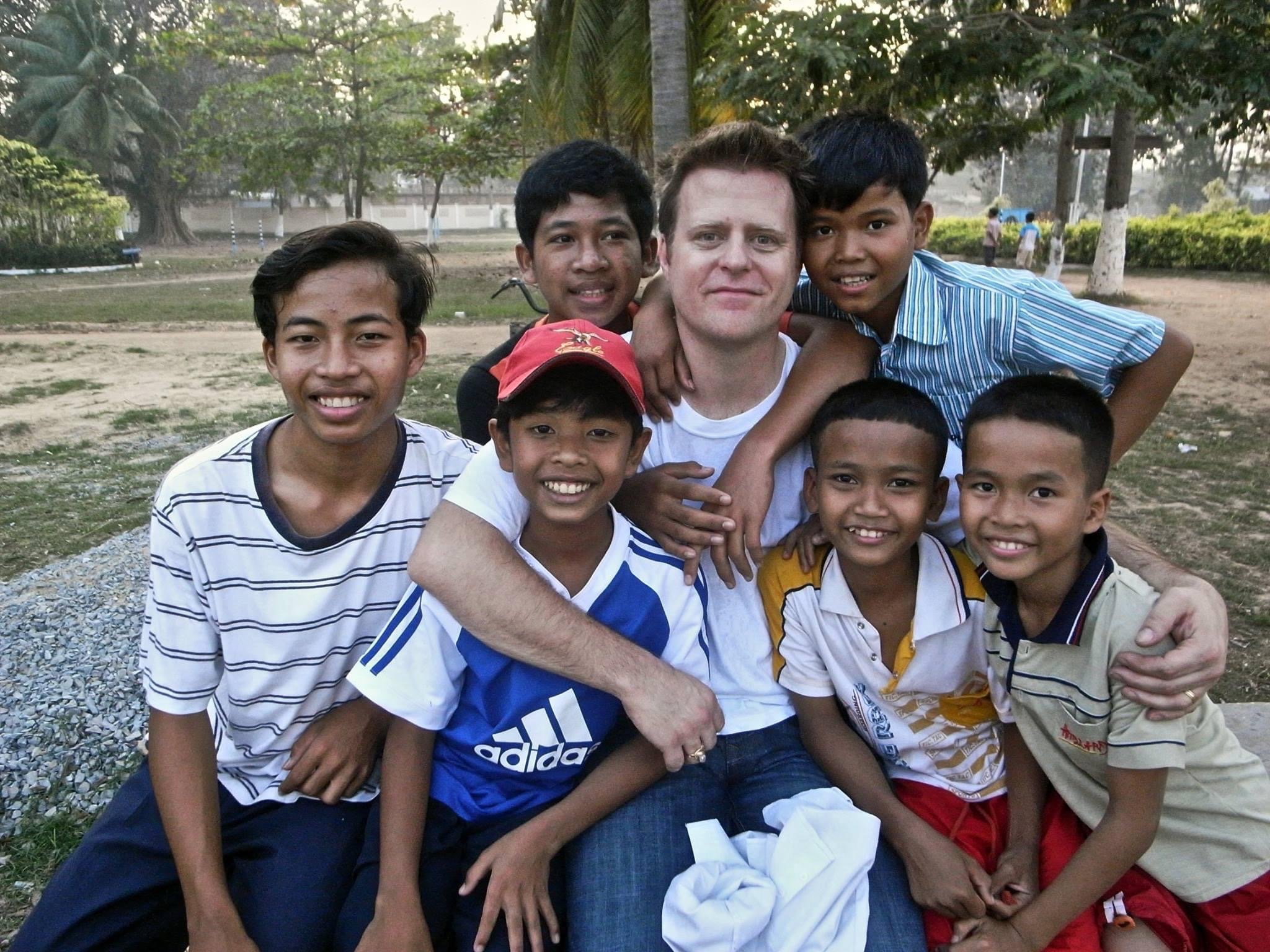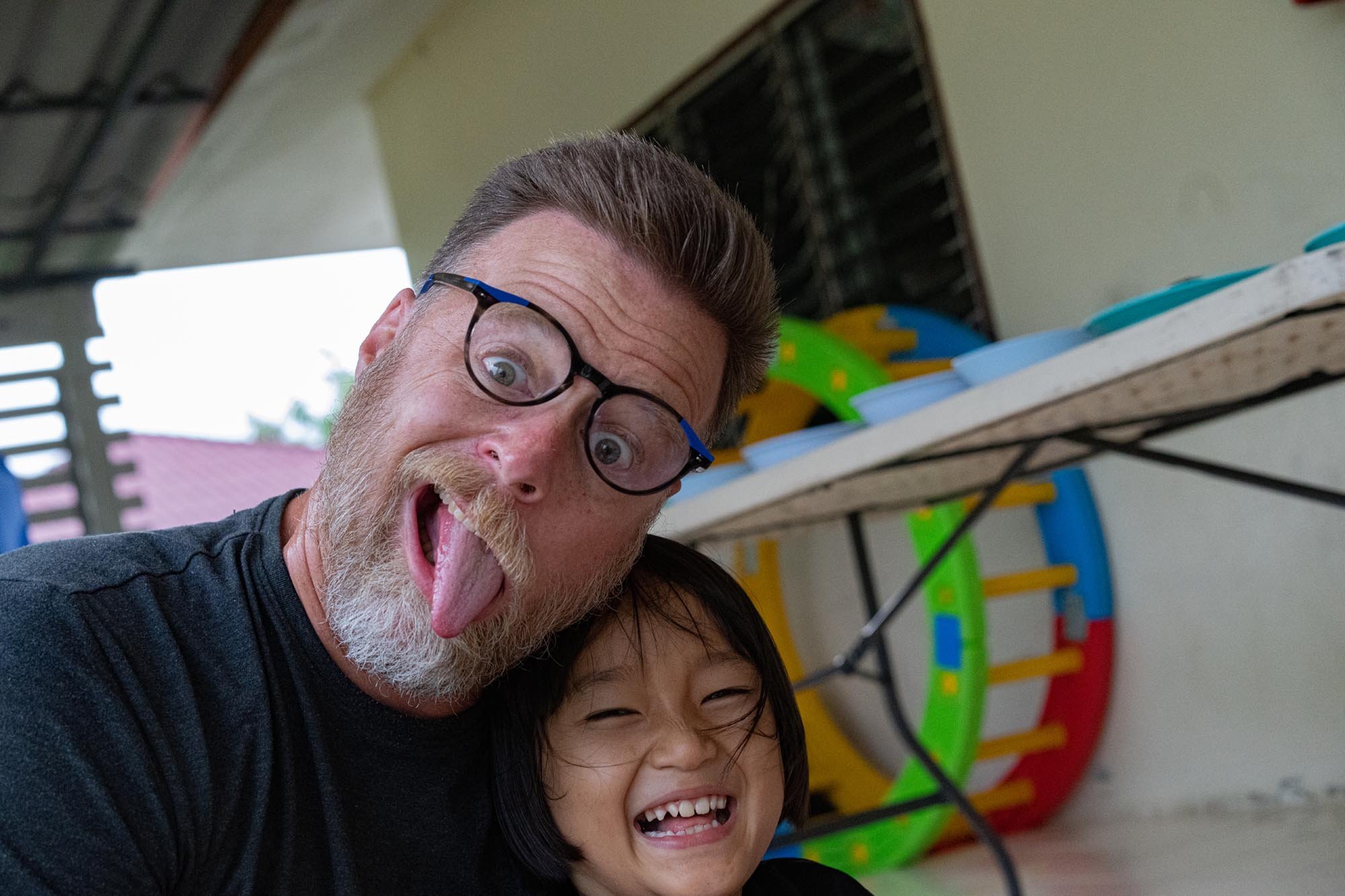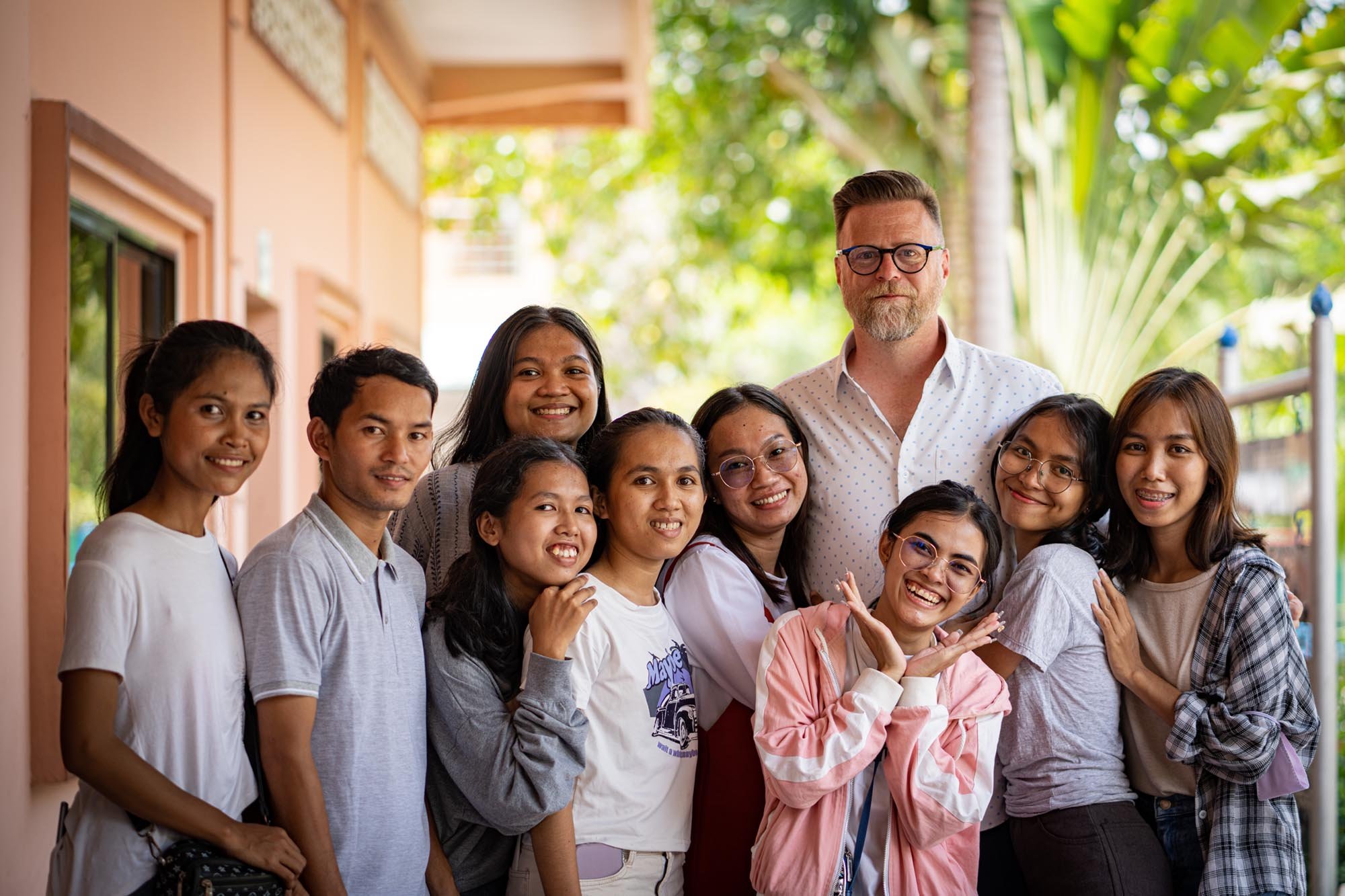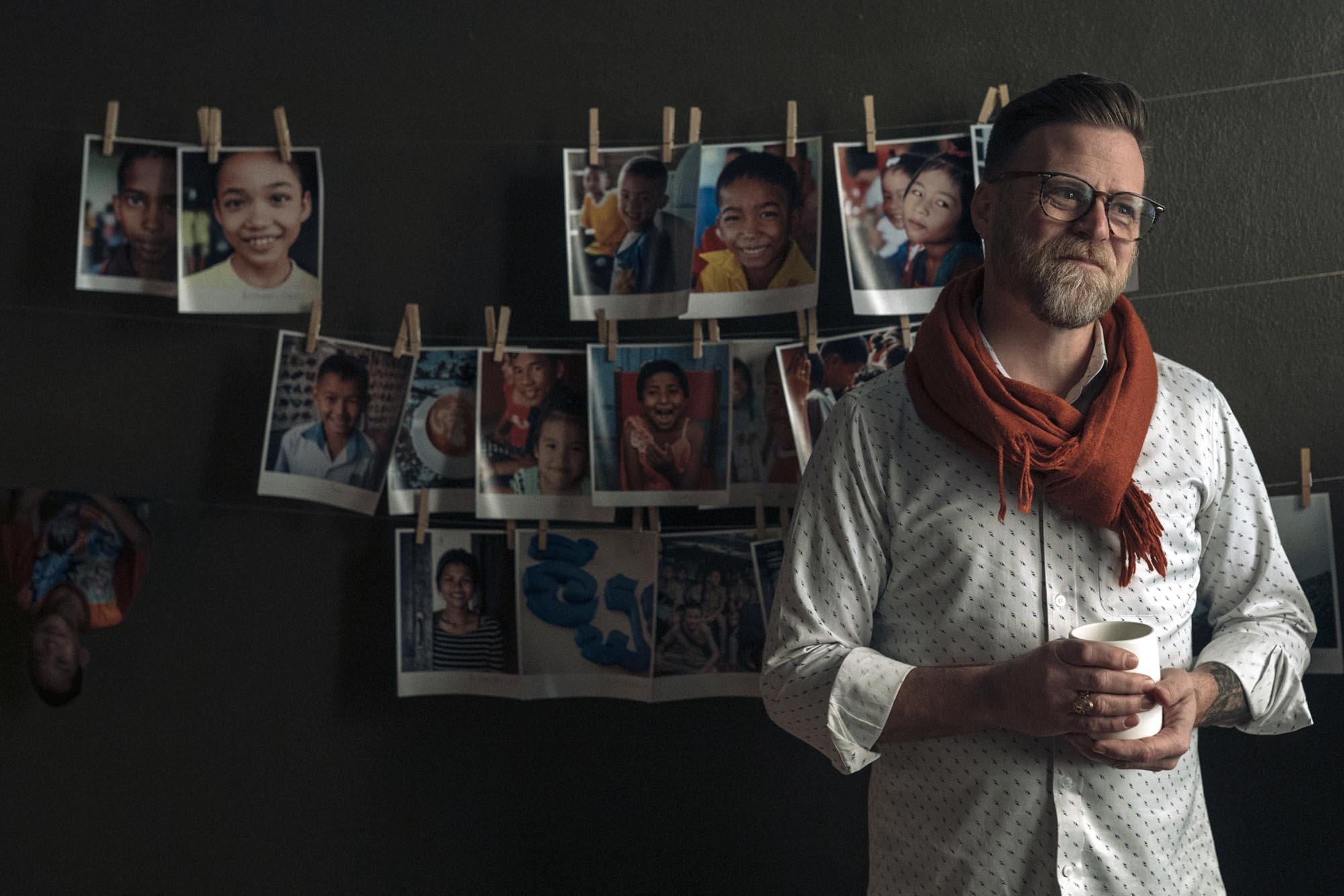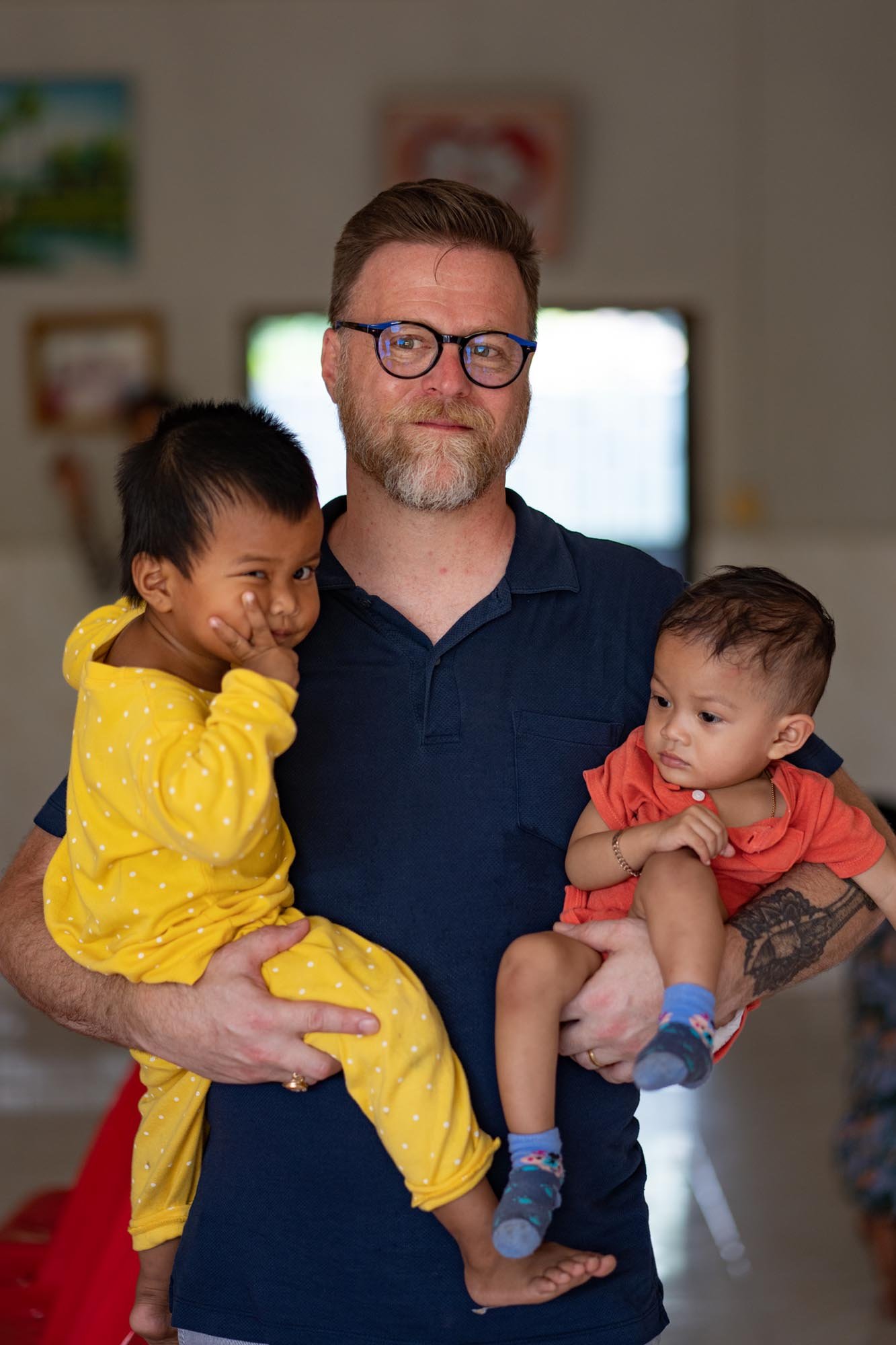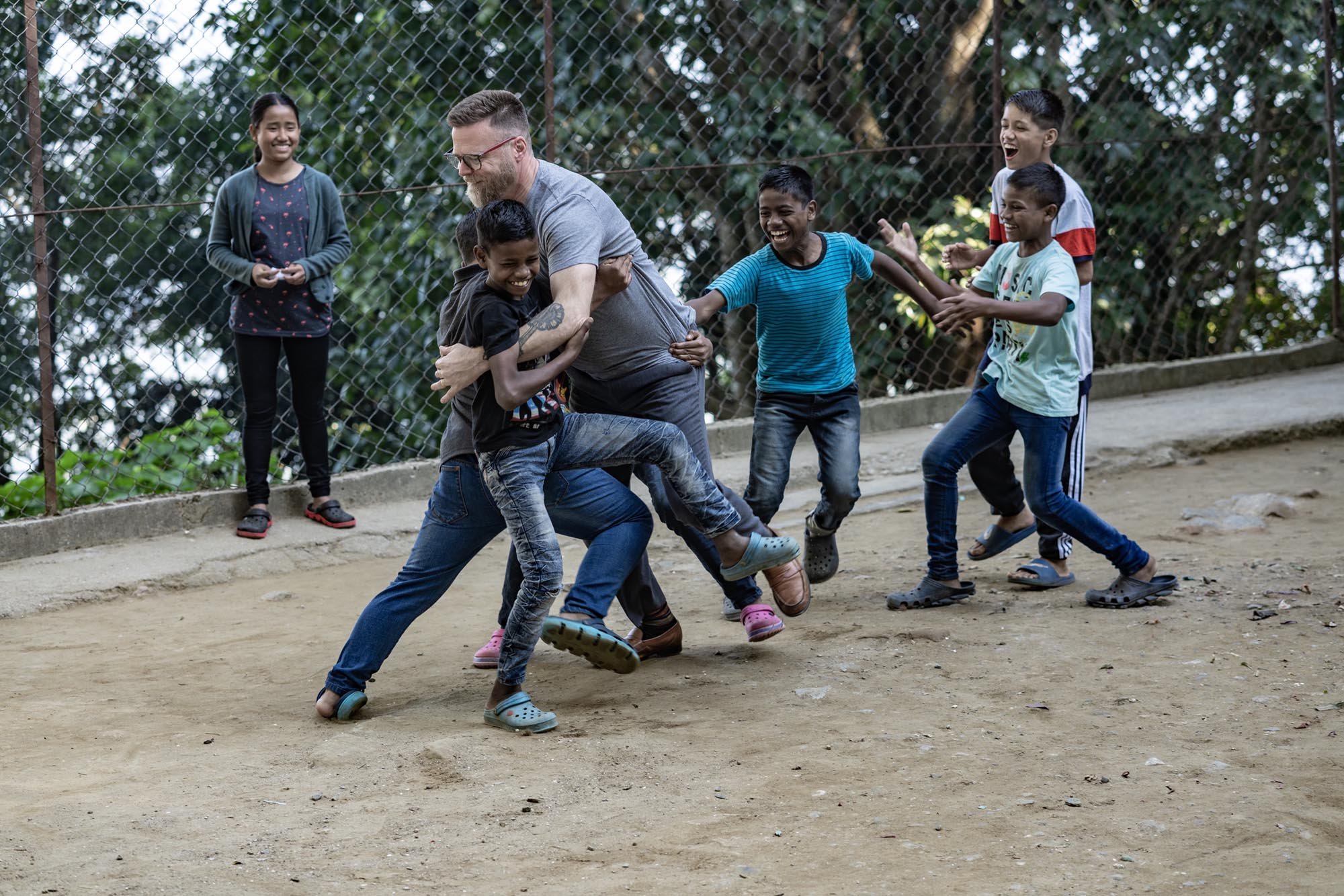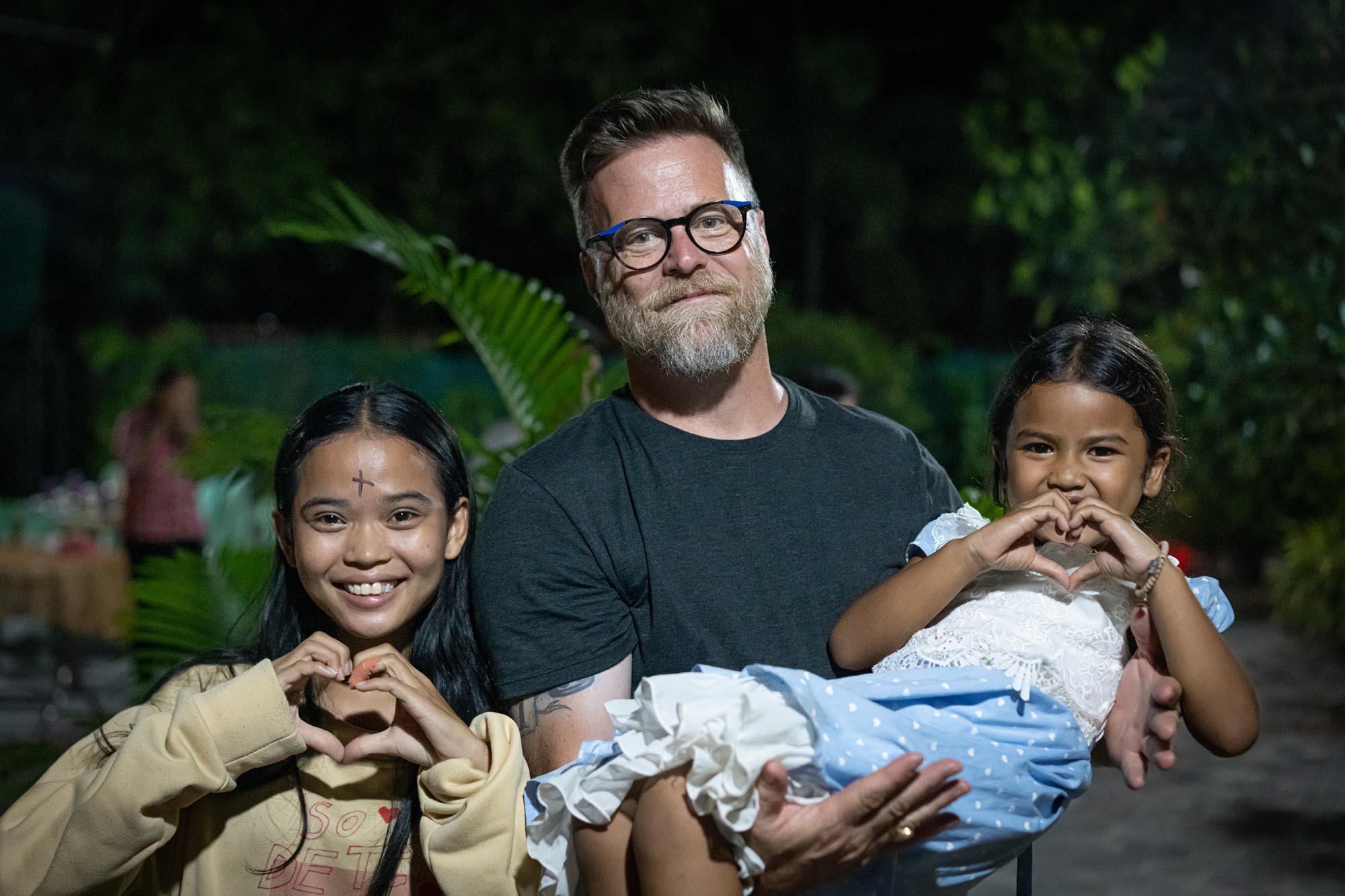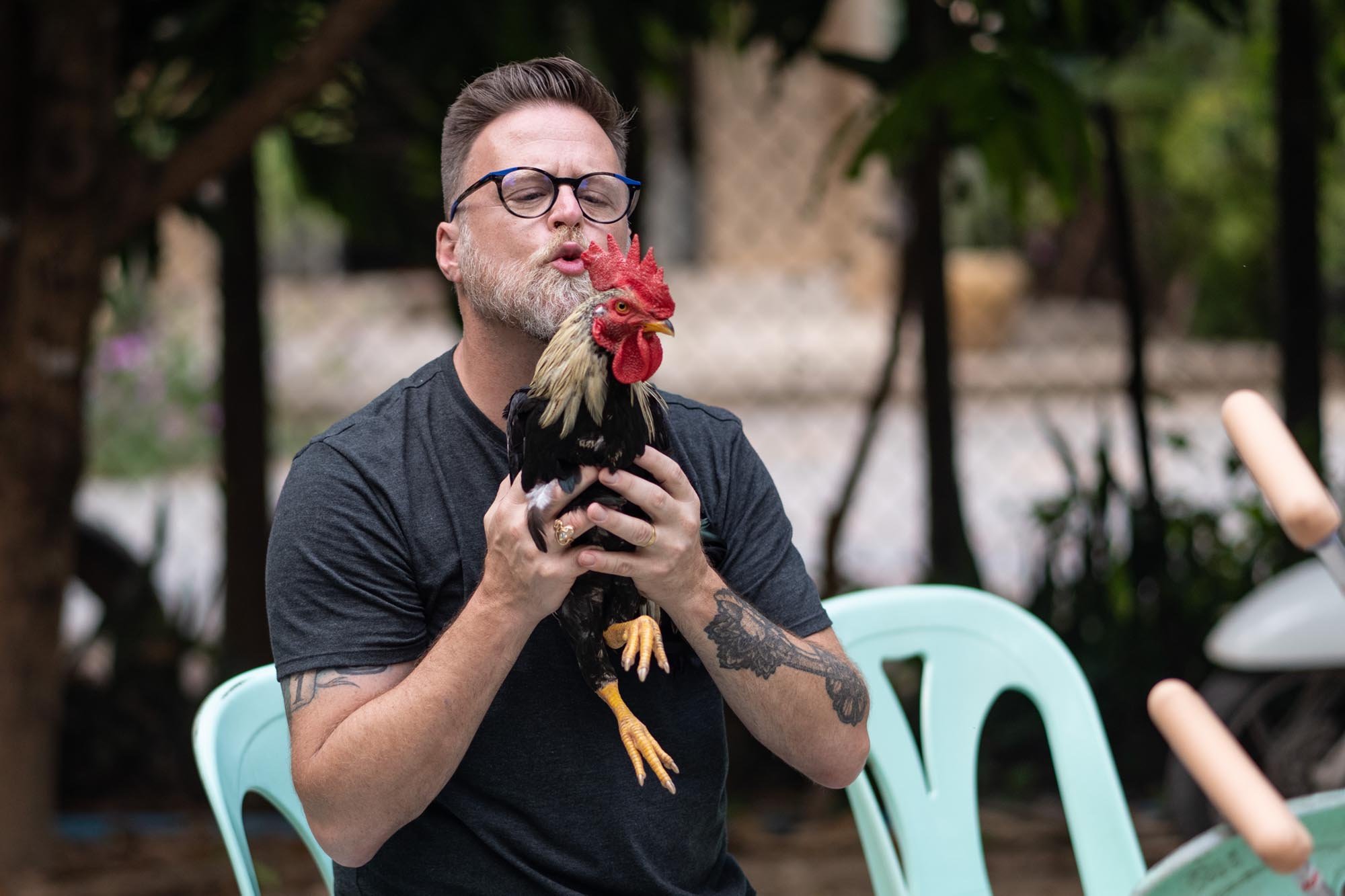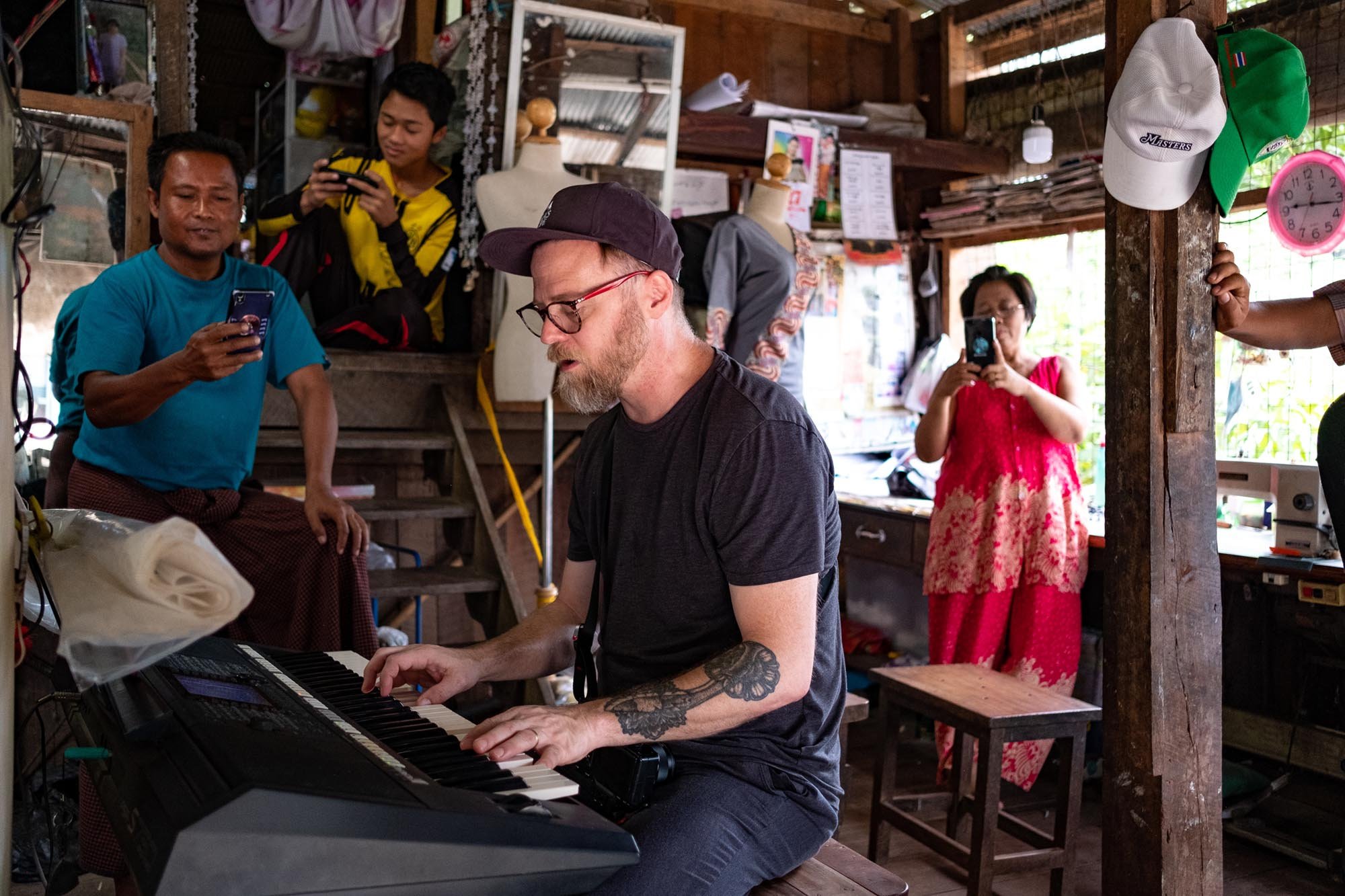I recently did an interview with friend and author Marla Taviano, addressing some of common criticisms and concerns facing organizations like ours. Eventually this may become part of a large FAQ we'll publish on the site, but for now, I think this will make some useful reading for anyone interested in the kind of work we do. Please feel free to ask questions in the comments section here or contact me if you want to chat further.
Before diving into the first set of questions, I wanted to point out that although there are some universal concerns to address – and even some misconceptions to clear up – I can only speak with authority for Asia’s Hope. That having been said, many of the criticisms I hear about residential orphan care ring true to me, especially for organizations that provide care in a traditional institutional framework.
I would agree, for instance, that large institutional orphanages staffed with shift-workers – as opposed to family-style children’s homes with full-time moms and dads – tend to exacerbate rather than alleviate many problems facing orphaned or poor kids. Unfortunately, many people who rightly criticize poorly conceived and badly run institutions paint with an overly broad brush, ignoring the complexity of the issues facing orphaned kids, their communities and the organizations trying to serve them, and obscuring the differences between good and bad strategies for care.
I hope that this dialogue will provide some helpful perspective for your readers who wish to understand the issues at hand and advocate for best practices in orphan care.
Question: "Three out of four children living in orphanages are not orphans; they still have at least one parent alive." Is this true of Asia's Hope orphanages?
First of all, I think that we have to clarify what we mean when we say “orphan.” Colloquially, most people think of an orphan as a child whose mother and father have both died. For our purposes at Asia’s Hope, however, we define an orphan as any child who has no parents who can or will care for them. So, while we do prioritize for admission kids whose parents have both died, we also provide care for kids who may have, for instance, a mother who has died and a father who is in prison or who has abandoned them.
Just yesterday we admitted a sibling group – two boys and a little girl – whose father had committed suicide, and whose mother had abandoned them. The kids had no food, no access to healthcare, no shelter and no education. Neither the villagers nor their extended family could or would take them in. Do these kids fit the popular definition of orphans? Maybe not. But they fit ours. So, offhand, I can’t quote you stats on how many of the 600 kids in our care have one parent living, but I can say that we only admit children for whom no other credible options exist.
We wholeheartedly support the organizations out there that provide different kinds of care – village-level education, preventative and emergency health services for poor families, well-baby care, advocacy for safe and humane working conditions for destitute laborers – these are all essential! But for a small percentage of poor children – those who have no one else to care for them, especially those who are at high risk for sexual and economic exploitation – we provide essential, lifesaving help.
Question: "Orphanages tend to separate children from their parents and from family life which is paramount for a healthy adulthood. Nothing is done to reunite children with their families and little is done to maintain strong relationships between children and their parents." Is this true?
Well, as I explained in my previous answer, most of the kids in our care have already been separated from their parents, and have received little or no help from their extended families, either because the families do not have the resources to provide that care, or because the families have simply abandoned them. So, for many kids, a reunion with a biological family is impossible. And in many other cases, it is the remaining family members – aunts, uncles, cousins -- who have been exploiting the kids, forcing them to work as on the streets as beggars, or in the fields as farm laborers. To reintegrate the kids into this kind of situation would be unwise and unsafe. But where possible, we facilitate continued contact with extended families. Often family members will come to visit, and occasionally, our staff will accompany kids back to their villages to help maintain contact between the child and their community of origin.
On the other side of the equation, we work hard to provide a real family for the children in our care. We don’t have huge, institutional facilities; we build or rent single-family dwellings. We don’t hire shift-workers, who come and go; we recruit full-time, long-term moms and dads who become parents to the kids in their care. And we work to keep the homes small.
We’ve seen huge orphanages – sometimes with hundreds of kids. Every study we’ve read and every piece of anecdotal knowledge we’ve accumulated indicates that kids from those types of institutions fare poorly as adults. That’s why we try to admit only 20 to 25 kids per home, and we generally maintain a high 1:5 staff-to-child ratio. The kids in our care develop stable, lifelong relationships with real mothers and fathers, real brothers and sisters. We believe that this will provide our kids with the kind of loving family environment that all experts agree works best for kids, especially kids who have suffered the trauma of loss and extreme poverty.
Question: "Most orphanages do not have reintegration programs for their youth. Youth who have spent years in orphanages are not adapted to community life and struggle to find their place in society when they become adults." What's going to happen to these kids as they prepare to finish high school?
Great question. We’re committed to providing every child in our care with the education and training they need to succeed as independent adults. Our kids are adapted to community life – they attend local schools, they visit the markets, the learn chores and skills they’ll need to integrate into the larger population. And they receive the best education available. We hire tutors to help them stay ahead in school, and we provide many options for educational advancement and enrichment. Our kids learn musical instruments, foreign languages, computer skills and recreational sports – all things we in the West would want for our own children.
When our kids graduate, we will provide scholarships and loans so that they can attend college or vocational training programs if they choose. And although most of our kids are still in elementary and middle schools, we’re making our Scholarship Fund a big priority over the next few years, soliciting private donations and encouraging our church partners and other sponsors to set aside funds to provide a high-quality post-secondary education for the kids they’re currently supporting.
Question: UNICEF is concerned about the emotional loss that the children may feel from exposure to a revolving door of volunteers. "While at the orphanage most volunteers seek to build emotional bonds with the children so they can feel they made a difference. Though well intended, this leads to a never-ending round of abandonment." Do you think this is something you need to be concerned about at Asia's Hope? How can you know that visits from mission teams are helping more than hurting?
This is certainly something to be concerned about. And this type of issue is one that we’ve addressed a multiple levels in our organization. A bit of context, first. There are a number of orphanages in Cambodia and across the developing world who rely on donations from “voluntourists” to fund their operations. This is a very risky model that opens the kids up to all kinds of potential dangers.
Aside from the very real attachment-related issues identified by UNICEF in the article you mention, children at these types of institutions are subject to wild fluctuations in the level of care they receive – when they get lots of visitors, they have enough food and medicine and money for schools. When they don’t, they don’t.
Also, this type of an arrangement is a child-protection nightmare. By inviting a never-ending stream of strangers, you drastically increase the chances of giving pedophiles access to vulnerable children who may be abused at the institution due to poor oversight by the staff or enticed away from the institution by offers of money or promises of other favors. As a result, many people who walk away from these types of visits feeling like they’ve done something good for the kids, actually end up propagating a model that can be harmful.
Although we at Asia’s Hope do host visitors from abroad at our children’s homes, our model is philosophically, strategically and tactically very different from that critiqued by UNICEF and others as “orphanage tourism.”
Asia’s Hope is not a volunteer placement organization, nor are we a short term missions oriented ministry. We exist to provide high-quality, family-style residential care for orphaned children at high risk of sexual and economic exploitation. The good of the children is always our top priority. All of our homes enjoy stable, ample funding from Asia’s Hope International, which recruits church partners in North America into long-term relationships with individual homes. We work hard to foster real, respectful relationships between the staff and kids at our homes and the leadership and selected congregants at the partnering churches. To maintain that relationship, we facilitate visits from the partnering churches, usually one or two times a year. Each visit operates under the authority of a partnering church, and within strict guidelines detailed in our child protection policy. We also occasionally host “vision trips,” designed to recruit churches and key donors into long-term funding relationships with Asia’s Hope. On a very limited basis, we also permit families who have supported Asia’s Hope in the context of a church partnership to visit the homes.
We work hard to respect the needs and wishes of our indigenous staff when we plan these visits; we try to schedule them at times that are conveniently aligned with the kids’ school calendar, and we work with our staff to make sure that visitors engage in activities that promote, rather than detract from family cohesion. In short, our homes are not tourist attractions. We welcome family and family friends, but like your home and mine, we do not have an unmediated, “open door” policy.
Question: I have lots of friends (online and in real life) who have a real heart for orphans. What advice would you give for those who want to be involved in a hands-on way (besides just giving money)? And beyond Asia's Hope, what kinds of things do they need to find out before giving their time/money/resources to an orphanage (or organization that supports orphanages)?
First of all, I want to offer a word of encouragement and affirmation. Caring for orphans is one of the highest, noblest aspirations I can think of. As a Christian, I believe that God’s spirit dwells in a very real way among the poor, the oppressed, the orphaned and the abandoned. There is a special blessing for all who give sacrificially to help orphans, a deep communion with Jesus that is impossible to attain from mere church attendance, formal worship or even Bible study. That having been said, some strategies and some motivations for serving orphans are more helpful than others.
I think that the first step toward hands-on involvement is one of deep and often painful self-examination. Think and pray long and hard and commit to doing what’s best for the orphaned kids and not what seems most rewarding to you. Ask yourself if you’re willing to work in anonymity, willing to work in submission to those with spiritual authority in the communities in which you wish to serve, and willing to work for little or no discernable reward if doing so will provide the greatest benefit for orphaned children. If you’re willing, then I believe you’re on the right path.
After my first trip to Cambodia, I wanted with all of my heart to move to the country, and to just immerse myself and my family into daily, hands-on interaction with the people there. I’ll admit, I believed that I was uniquely called and equipped to make a difference with my presence ‘on the ground.’ I was challenged – and saddened, at first – by a Cambodian pastor who said to me, “John, we do not need you here. We have experienced, skilled workers here. We need you to help us provide financial resources that we cannot get here, and to tell our brothers and sisters in America about what God is doing in Cambodia and ask them to help.” I had to do a real gut check. Was I in this for me or for the people I was claiming to serve? It was only after I decided that I would continue to work for the good of the Cambodian people even if I never received any of the warm feelings and personal affirmation that I really got confirmation from God that this was the right path for me and my family. I don’t mean to suggest that there is no role for hands-on involvement for Westerners in international ministry; I just mean that we all need to check our own priorities at the door and focus on what really is best for the people we’ve been called to serve.
Second, you need to take personal inventory of your skills, your talents and your spiritual gifts and determine which of these are most useful in meeting the needs of orphaned kids. Do you have money or access to money through your church or circle of friends? Mobilize those resources. Talk to your boss; approach your pastor. Encourage them to make orphan care a priority.
Are you a skilled communicator? A photographer? A graphic designer? Do you have logistical, technical or accounting skills? There are dozens – maybe hundreds – of existing organizations doing great work that could use your services. Get involved. Volunteer.
Some of these opportunities might even lead you to in-country involvement. If you’re a nurse, doctor or dentist, or if you are certified to teach English as a second language, you might be uniquely equipped to go short- or long-term to minister overseas.
Third, you need to figure out which organizations you align with philosophically, strategically – even theologically. This may take some time and some research. But it’s a really important step. If you’re going to pour your heart and soul and your money into a cause, it’s worth making sure that the cause is well-run and well-conceived.
Here are some key questions you should ask to determine whether or not an orphan care organization is worth supporting:
- Does the organization align with my ethical and theological world view?
- Is the organization legally registered with the government?
- Does the organization meet or exceed the government’s minimal standards for child care?
- Does the organization have long-term, trained and well-supervised staff?
- Does the organization have a child protection policy that covers all staff and visitors?
- Are sibling groups kept together?
- Does the organization attempt to replicate family living?
- Does the organization have workable strategies for stable, long-term funding?
- Does the organization have strategies in place to transition the children into successful, independent adults?
- Does the organization respect and empower indigenous staff?
- Is the organization and its staff financially transparent and accountable?
If you can answer “yes” to all of these questions, then I’d say you’re working with an organization that is trying its best to do what’s best for the kids in its care. If not, then you should exercise real caution about getting involved. No organization is perfect, but you should expect to see progress toward all of these goals.
Question: Tell me a little about you and your family. How did you get involved with orphan care and with Cambodia?
Well, my wife Kori and I were high school sweethearts. We’ve been married for 18 years. We live in Columbus, Ohio with our three kids, all of whom were adopted. Chien, 14, is from Vietnam. Pak, 13, is Korean and Xiu Dan, 6, is from China.
We adopted Chien in 1998 while Kori was working as a mechanical engineer, and I was working at a small graphic design and marketing firm I had just started. Our trip to Vietnam changed our lives for a lot of reasons. First, it introduced Chien to our family. Also, it planted the seed in our hearts that would eventually grow into full-time, vocational orphan care and advocacy.
To be honest, neither of us had any specific interest in Asia prior to Chien’s adoption. We knew we wanted to adopt (we’re not infertile, as far as we know), and at the time, Vietnam was a relatively easy program to apply for. So, we did it. But during the adoption process God really drew our hearts to Asia, and then sealed the deal when we went to pick up six-month-old Chien.
After Chien’s adoption, we couldn’t stop thinking about Vietnam. We couldn’t forget the people we met, especially the orphans and street kids. We began to believe that God might be calling us to full-time vocational missions work in Vietnam. We spoke with our church, we approached various missions people in our denomination, and none of it really panned out. It seemed like the doors just weren’t going to open for us.
Meanwhile, God had plans to bring our son Pak into our lives. He was born in the U.S. to a young Korean woman, and came rather suddenly into our lives. In fact, he was born the day after Chien’s first birthday, and was in our family the day after that. Later, in 2006, we would travel to China to adopt Xiu Dan.
So, anyway, in 2000 the youth pastor at the church we were attending approached me and said, “John, I know that you and Kori are really in love with Vietnam. Would you ever be interested in Cambodia?” To be honest, I didn’t know much about Cambodia, except that it was next door to Vietnam, and that it was desperately poor, having been beat to shreds by a brutal civil war. I said, “Well, sure. Why?” He told me about a pastor from a church in our denomination about an hour away from Columbus. “He does something in Cambodia. Not sure what it is – you should call him.”
I called the pastor, and basically invited myself along on his next trip. He graciously allowed me to come along on what was pretty much a run-of-the-mill short term missions trip. But while we were there, God gave us a vision to move beyond a once-a-year visit evangelism and teaching gig. We met so many amazing Christians in Cambodia – they had everything they needed for successful ministry – the organization, the passion, the gifting, the spiritual authority – everything but money. And we as American Christians had the converse – money, and a willingness to help, but very little else to bring to the table.
It seemed pretty easy at first. Let’s make a commitment to fund a small project, and then we’ll go back to America and ask our friends to donate. So, that’s what we did. We agreed to help a church in Phnom Penh rent a building for ministry to college students. It was something like $700 per month. Not a very big commitment. So, we set about raising funds, and before long, enough people had given that we had to start thinking about get serious. We incorporated as a non-profit in 2001.
For the first few years, we had a bit of a scattershot approach to our work, funding everything from medical clinics to outreach to military officials. When the opportunity came to start our first orphan home in 2004, I knew I’d found what I’d been looking for. Over the next few years, we narrowed our focus to residential orphan care, and expanded to Thailand, opening our first home there in 2005. Today, we operate 23 homes in Cambodia, Thailand and India, providing comprehensive care for about 600 kids. We have about 150 indigenous staff – moms and dads, teachers, nurses, cooks and administrators.
The co-founding pastor served as our full-time Executive Director until February 2009. After he left the organization, I took the directorship, and I closed my design business shortly thereafter. I love what I do, and can’t wait to see what God does with this ministry over the next few years.




